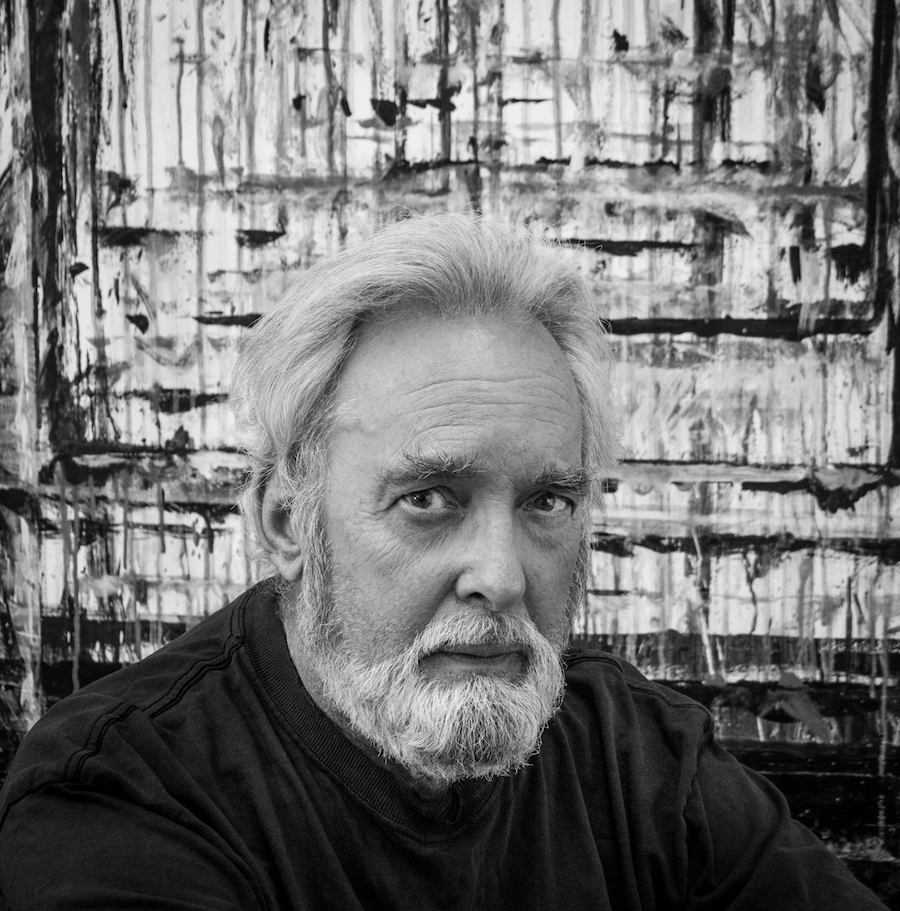Twenty Books Collage or “… Leap and the Net will Appear!”
Zen Proverb, full letter from Richard Shaffer, October 2006
Artist, Santa Cruz CA, www.zebraparis.com, zebraparis@sbcglobal.net
Somersaulting from antiquity across to the new poetry, Lee Altman is forever looking and reading his texts for those sudden surprises. Whether he is accessing etymology in the Oxford dictionary or just perusing a child’s tale, Altman remains a literary artist, sourcing his imagery in the contemporary mixtures of our time.
Collage work is sometimes a “side-show” art, crafted from many tricks and sleight-of-hand gestures, sometimes from the discarded imagining of what once was toward that which one wishes it to be. Lee Altman is following those wandering arabesques of forgetfulness into those tight loops of remembering; it’s like learning something! Whenever I see his studio walls splashed with these ideas, shapes, and lines, I always remember both the skills and accidental fortunes of that iconic acrobat. Jump!!!
It’s pure Altman, I say in my mind … raw, cooked, decayed, and fermented …
Yet Altman’s surface is accessible; it is full of layers underneath, capturing the editorial work of simplification. Slipping easily between the layers is like entering the best poetry from the middle ground where it is fullest. Yes, indeed, there is a beginning and an end to all narratives, but the heart of the matter is more central, closer to when the author begins to say what is really meant. More than the frames of the book at either end, let’s dig deeper into these images wherein the structural comparison to a book is relevant, even important, to their appreciation and value. Visual collage is like building the storyboard, the chapters, and it is Altman’s “essay on choice” that leaves the door open for the viewer. It’s not castigating the eye for a direct or pedagogic meaning, not demanding that the lesson be learned; rather, Altman only invites.
The language of art is the writing of form. Like any good author, Altman is searching the archives, finding the histories, and unleashing syntax. He edits the collage by staring at it, seeing into the possibility, not quite satisfied by the pretty or the overwrought. Like the child, Altman is after the hardest feat – to find the utterance that moves (pure Heidegger!) and the expression of these sounds as finally locked together in a full sentence. He wants simply to find a Voice that can speak, only later desiring a “literacy” that knows the image, the 20 book wisdom of this collage.
And Altman is actually an intellectual artist first of all. I recall his letters and writings on writers, quotes and quips, and subtle postcards – always filled with the best “stuff” (not unlike the 20 Books collage) and these remnants remain important – revered parcels to me today like the day I received them at the Paris post office years ago!! I count on these resources from Lee Altman, and I find his person and work inspiring always.
He never fools me with a bad translation, and he always gets a lot into a small space!
Altman’s work brings forward a reference to a new writer that I stumbled upon yesterday. He wrote a wild poetry book (Picador) entitled The Talking Horse and the Sad Girl and the Village Under the Sea. Yet despite his accomplishment, this new writer Mark Haddon, while reflecting on his work, eagerly cited his own “worst unpublished novel ever” as that book which interested him most. Alongside the commentary, Haddon said much more that surely applies to the 20 Book Collage of Lee Altman and its truthful reading; indeed, it applies to all of us!
“… I certainly hope to continue writing poetry, but you never know … part of the appeal has to be the possibility of producing really bad writing. It is daunting but always exciting. And when you pull it off it is like escaping from a car accident. There is no elation like it!”
More “near misses” to you, Lee. DRIVE FAST!

